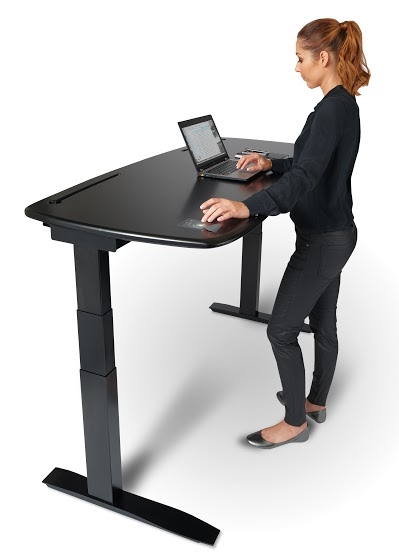By Marilyn Lemaire, Co-Owner and Naturopath at VIVE
Prolonged Sitting
 Gardiner (4) conducted a study with 1,958 Australian individuals between the ages of 60-69 to evaluate the effects of prolonged sitting on Metabolic Syndrome. The results showed that prolonged sitting in women led to a decrease in the HDL cholesterol, poorer glucose tolerance, and higher abdominal obesity; and in men and women the results showed overall higher levels of fats. Metabolic syndrome historically has been associated with poor nutrition, high alcohol consumption, lack of exercise and smoking. It is only recently that prolonged sitting, which is not to be confused with lack of exercise, has become a significant lifestyle risk factor for the development of metabolic syndrome (4).
Gardiner (4) conducted a study with 1,958 Australian individuals between the ages of 60-69 to evaluate the effects of prolonged sitting on Metabolic Syndrome. The results showed that prolonged sitting in women led to a decrease in the HDL cholesterol, poorer glucose tolerance, and higher abdominal obesity; and in men and women the results showed overall higher levels of fats. Metabolic syndrome historically has been associated with poor nutrition, high alcohol consumption, lack of exercise and smoking. It is only recently that prolonged sitting, which is not to be confused with lack of exercise, has become a significant lifestyle risk factor for the development of metabolic syndrome (4).
“It is a myth that doing 1 hour of moderate or vigorous exercise will negate a sedentary day. This highlights the fact that being sedentary is a risk factor for poor health in older adults and possibly for the younger population as well.”
Prolonged sitting causes fewer muscles to contract which results in a decrease of fat burning, a reduction of sugar clearing and also a decrease in insulin secretion. On a positive note, when prolonged sitting is interrupted or broken up with even light exercise such as standing there is a improvement in glucose clearing and increase in insulin levels (5).
Metabolic Syndrome rates were significantly lower in individuals that maintained a high level of daily activity (that is, doing any physical activity and not necessarily activity that is defined as exercise). NEAT (also known as non exercise activity thermogenesis) is movement not deemed exercise and proven to stimulate cell function of skeletal muscles such as maintaining fat burning and increased levels of HDL cholesterol (4).
Breaks in prolonged sitting have been shown to have favorable results with reductions in abdominal fat. This can be achieved by:
– Standing at a workstation
– Pacing when talking on telephone
– Delivering a message in person rather than emailing a colleague
Gupta (6) showed that if workers replaced sitting times with not only physical activity but also with standing they had positive results on preventing obesity.
To reduce the cases of Metabolic Syndrome it is important to reduce the long periods of time spent in a sedentary position and to encourage taking short breaks to activate the large skeletal muscles which will stimulate fat burning, improve HDL and also improve insulin production and its use.
Non-Exercise Activity Physiology (NEAT) and Metabolic Syndrome
Increasing non-exercise activity will likely be the solution for reducing the sedentary lifestyle that is epidemic in developed and developing countries. NEAT is possible for everyone and this non exercise activity is significant in preventing weight gain, protects against heart disorders and prevents insulin resistance.
A study with 5,865 participants concluded that the extreme amount of sitting time that is becoming the norm in developed countries is increasing the prevalence of developing metabolic syndrome and the occurrence is independent of the physical activity that an individual does in their day (1).
Conclusion
Because of technology and modernization of our world, sedentary lifestyle’s are on the increase and some authors believe the high percentage of time people sit still has not peaked. Finding the right campaign to bring about change against sedentary lifestyles is a challenge.
In a study involving 15, 235 individuals, Petersen (7) concluded that sitting for more than 6 hours a day significantly contributes to the increase in metabolic syndrome. This is at least a guideline for individuals to monitor their sitting time and ensure that they make the most of standing and movement.

